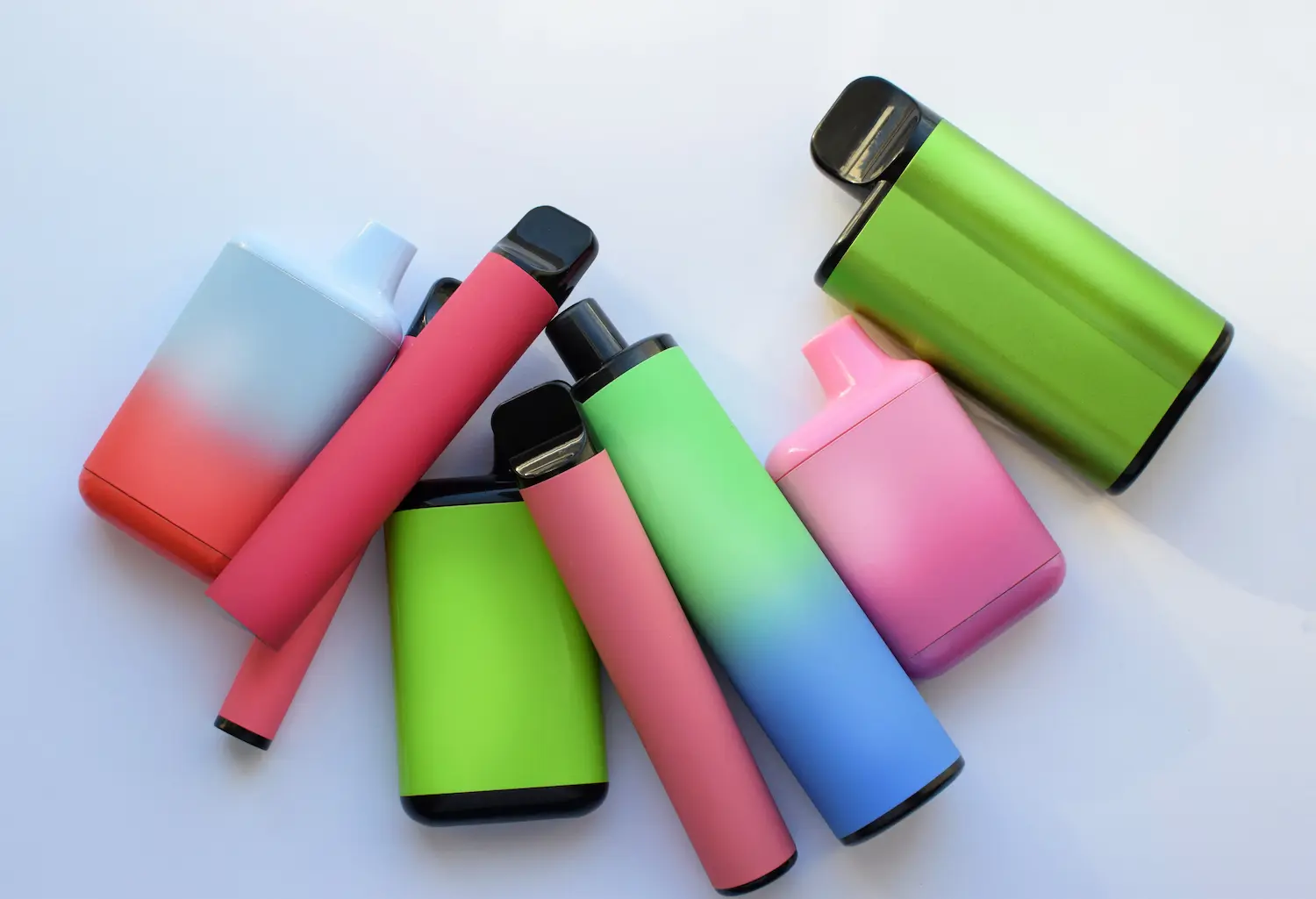From Puff Bars to Zyn:
Nictotine Use Among Teens (Vaping & Puches)

A parent-friendly guide to vaping, nicotine pouches, and what’s really going on
Let’s be real. . . Parenting today means staying on top of a lot. Between apps, trends, and teen mood swings, it’s easy to feel like you’re always playing catch-up. One issue that keeps popping up: nicotine. Whether it’s vapes, puff bars, or newer products like Zyn pouches, many parents are asking:
“Is this getting better or worse?”
“Is my teen using something I don’t even recognize?”
“How dangerous is it, really?”
You’re not alone in wondering. While teen nicotine use looks different than it did a decade ago, it’s still a major concern. Let’s break down what’s happening, what to watch for, and how to talk to your teen.
So… is it rising?
Here’s the short version:
- Vaping is still the #1 way teens use nicotine.
- Overall use has slightly gone down, but it’s still widespread.
- Nicotine pouch use is growing quietly.
According to the CDC, about 1 in 18 teens used e-cigarettes in 2024. That’s a drop from the year before, but still over 1.6 million kids. Meanwhile, nicotine pouches, like Zyn or On!, are on the rise. They’re less common (around 1–2%) but gaining traction fast.
So yes, the numbers are shifting, but the overall concern? Still very real.
What are today’s teens using?
Today’s products are way more discreet, high-tech, and kid-targeted than old-school cigarettes.
Vapes / E-cigarettes
Devices like Puff Bar, Elf Bar, and JUUL deliver nicotine through flavored vapor. They’re sleek, rechargeable, and often look like USB drives or highlighters. Most are sold in fruity, candy-like flavors.
Nicotine pouches (Zyn, On!, Rogue)
These are tiny white pouches placed between the lip and gum. There’s no smoke, no spit, and no smell. Many come in “fun” flavors like cinnamon or citrus. They’re easy to hide and harder for adults to detect.
Why are teens drawn to them?
Let’s be honest: it’s not just peer pressure. Teens are smart, but nicotine products are sneakier than ever. Here’s what’s pulling them in:
- Flavors: Over 85% of teen vapers use flavored products. Fruit, candy, and mint dominate. Flavors make it feel less like a drug and more like a snack.
- Stress & anxiety: Some teens say vaping or using nicotine pouches helps them cope. But it’s a false fix. Nicotine often increases anxiety in the long run.
- Curiosity: “What’s it feel like?” “Everyone’s doing it.” That mix of FOMO and testing boundaries is classic teen behavior.
- Marketing: TikTok influencers, YouTube ads, and cool packaging make these products seem trendy, even harmless.
- Discreet design: Today’s devices are tiny, easy to hide, and don’t always leave a smell. Some teens even use them in class without being noticed.
What’s the real harm?
Here’s the big one: Nicotine changes the teen brain.
It affects areas responsible for:
- Focus and memory
- Mood regulation
- Impulse control
The CDC warns that even short-term use can make these functions worse and that addiction can happen quickly, sometimes after just a few uses.
Plus, it’s not just nicotine. Vapes can contain:
- Heavy metals
- Cancer-causing chemicals
- Tiny particles that damage the lungs
And pouches? Even though they don’t involve smoke, they’re packed with nicotine, sometimes more than a cigarette. They can cause gum damage, mouth sores, and quick dependence.
Bottom line: If it contains nicotine, it’s not harmless (especially for teens).
How can I tell if my teen is using?
Sometimes it’s obvious. But often? Not so much. Look out for:
Physical signs:
- Sweet or fruity smells on clothes or hands
- Coughing or wheezing
- Mouth sores or irritated gums (especially from pouches)
Behavioral signs:
- More anxious or moody than usual
- Always needing a “bathroom break”
- Sudden drop in grades or focus
- Secretive about their backpack or pockets
Objects to look for:
- Small USB-like devices
- Round tins or foil packets (common with pouches)
- Strange chargers, cables, or pod cartridges
No one sign proves anything, but if something feels off. Trust your gut. Start a conversation.
How to start the conversation (without a fight)
Talking to your teen about nicotine doesn’t have to be a showdown. Try this approach:
Stay calm and curious
Avoid accusations. Instead, ask open-ended questions like:
- “What do you think about vaping?”
- “Do you see this happening at school?”
Share the facts, not just fear
Explain how nicotine affects their brain and mental health (without sounding preachy). Example:
“I read that nicotine can actually make anxiety worse. That surprised me.”
Focus on their values
Most teens care about their image, independence, and sports. You can say:
“You work so hard at [sport or activity]. This stuff could really affect your stamina.”
Be honest about your concerns
Make it about care, not control:
“I love you. I want your brain and body to grow strong. That’s why I’m bringing this up.”
What if they’re already using?
First: Don’t panic. If they admit it, take a breath and thank them for being honest.
Then:
- Ask what made them start: stress? Friends? Curiosity?
- Let them know you want to help, not punish.
- Set a quit plan together and explore tools like the Truth Initiative’s “This Is Quitting” text program.
- Talk to your pediatrician or a counselor if needed. Support is out there.
Addiction is tough, but teens can absolutely quit—and they need encouragement, not shame.
Set the ground rules
Boundaries are love in action. Here’s how to set clear expectations:
- Make a family rule: “No nicotine use in our home, period.”
- Be consistent: If rules are broken, follow through calmly.
- Monitor devices & purchases: Stay aware of what’s coming into the home.
- Model healthy coping skills: Show how you handle stress without relying on substances.
- Encourage sports, hobbies, and friendships that support a substance-free lifestyle.
You’re not trying to control them- you’re guiding them.
So… what now?
If you’re feeling overwhelmed, here’s the good news:
You don’t need to be a health expert or perfect parent. You just need to show up, keep the conversation going, and stay curious about your teen’s world.
Remember:
- Even if vaping stats are shifting, nicotine is still very much a teen issue.
- Pouches are the new trend—but not a safer one.
- Your influence matters more than you think.
- Open dialogue + clear rules = your best protection.
- There’s help out there—for you and for them.
You’ve got this. And Operation Parent is here to walk alongside you, every step of the way.
Sources:
- Operation Parent Handbook (2025 Edition)
- SAMHSA: E-Cigarette Use Among Youth and Young Adults
- CDC: Youth and Tobacco Use
- American Academy of Pediatrics: Nicotine and the Adolescent Brain
- Truth Initiative: Vaping, Nicotine Pouches, and Youth Use Trends
- FDA: Youth Tobacco Prevention Plan
%5B90%5D.avif)





